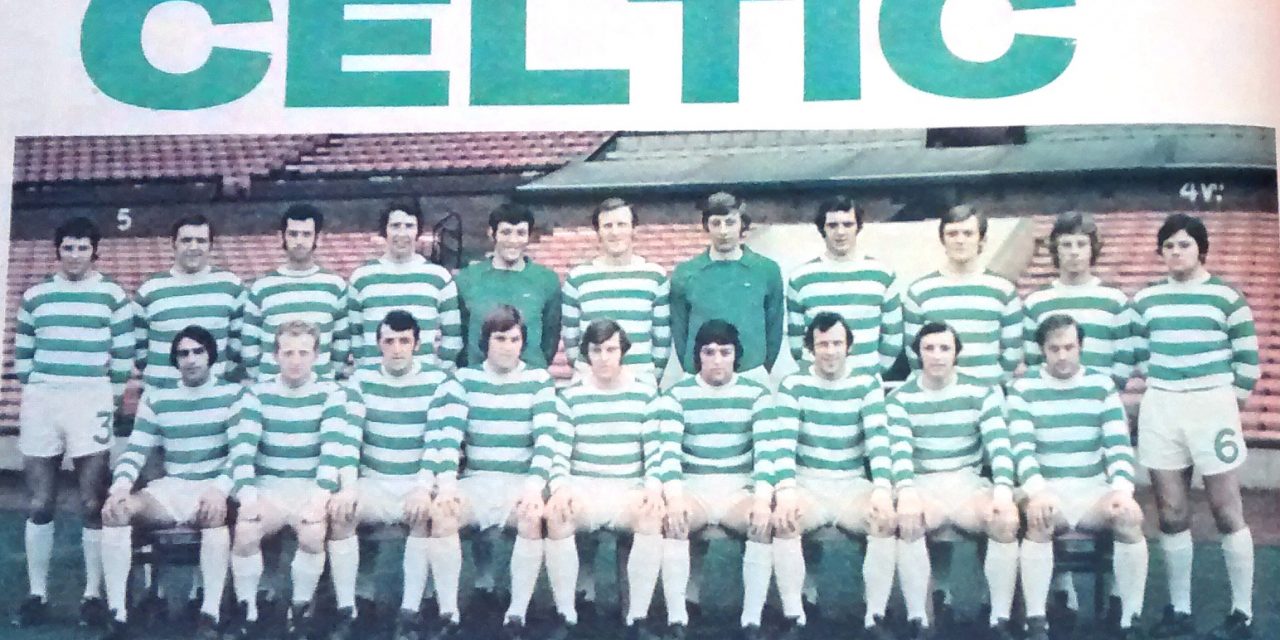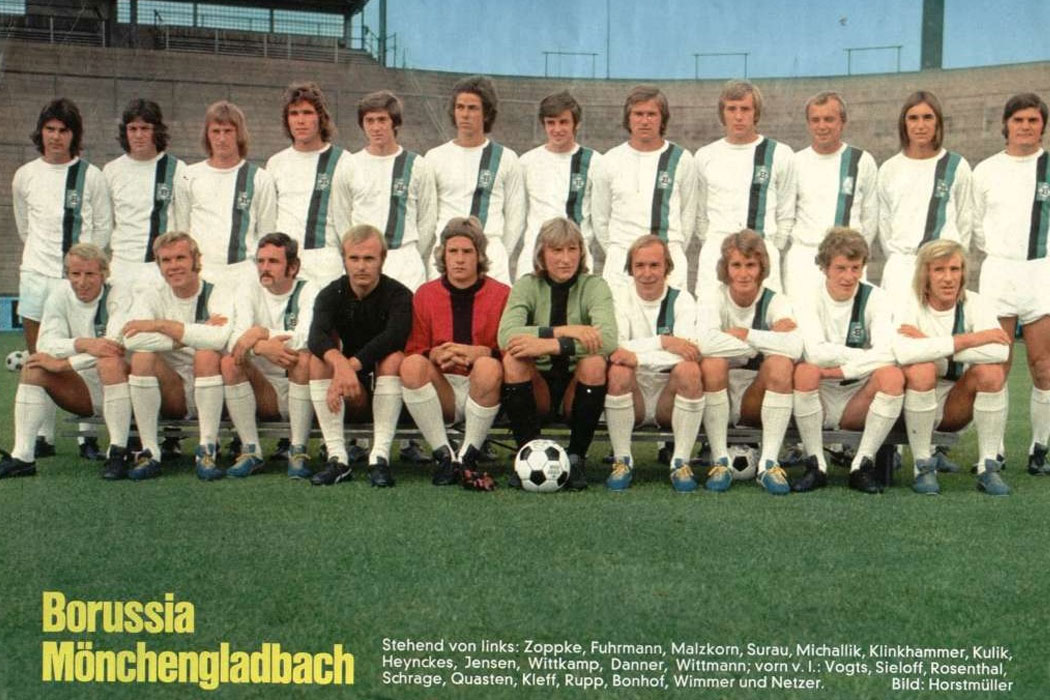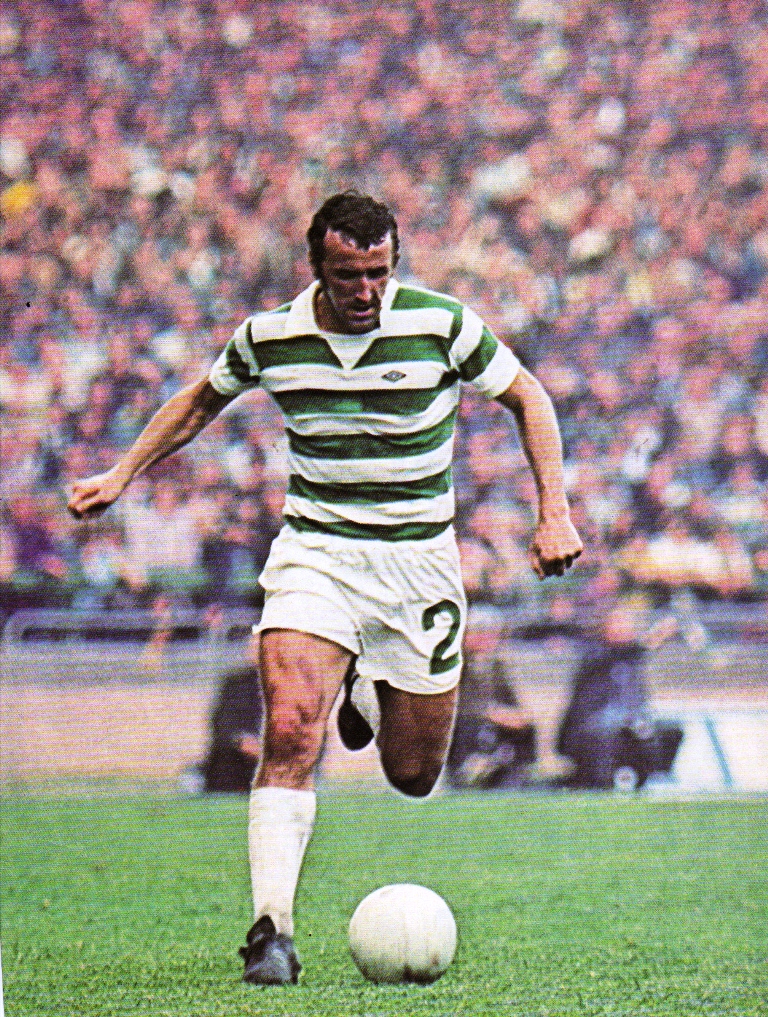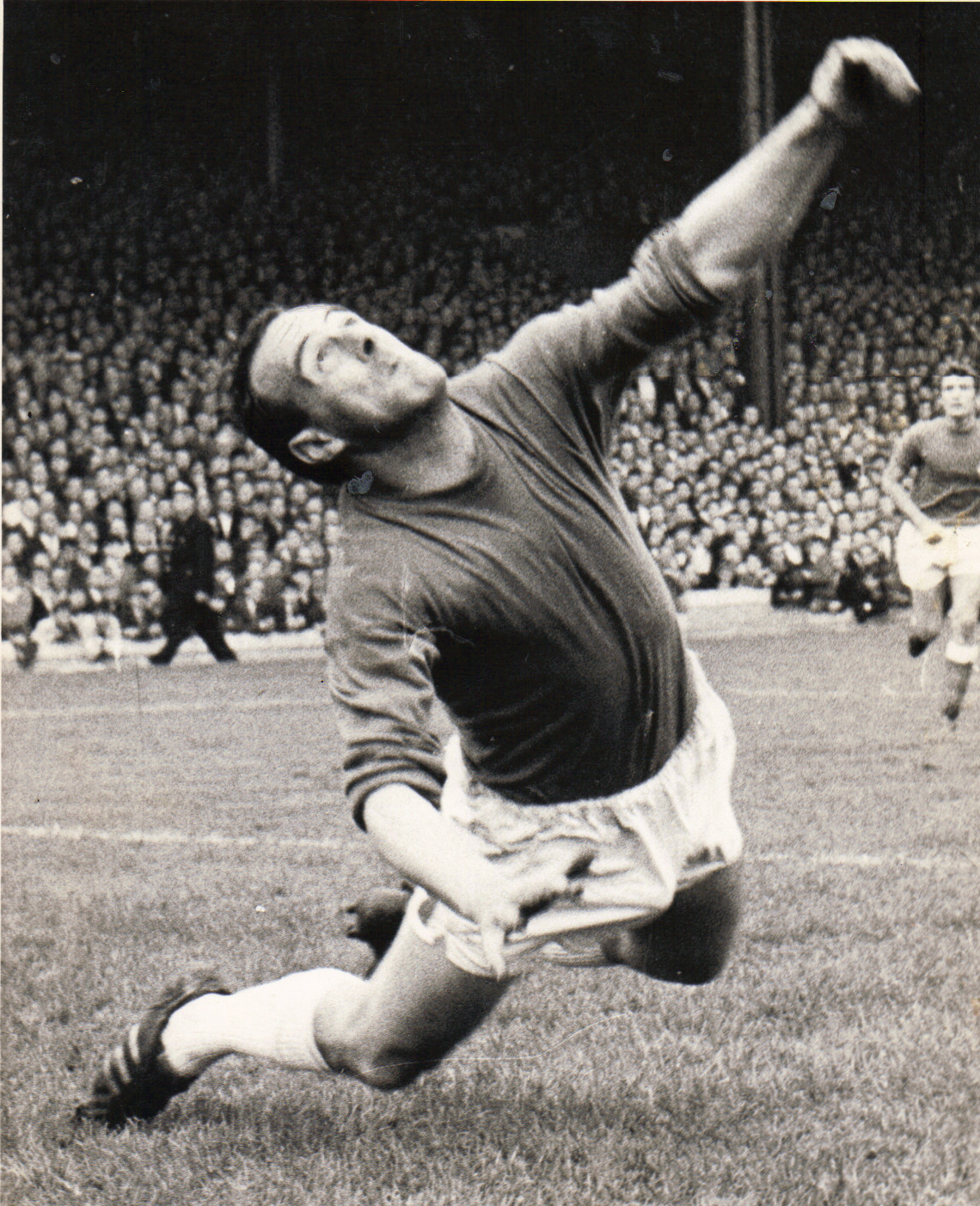Many Celtic observers and historians have commented in the past on Jock Stein’s ambition to build a new Celtic team from scratch to replace the Lisbon Lions. Over the course of time Jock hoped that he could phase out some of the older Lions and replace them with the excellent supply chain from the legendary ‘Quality Street Gang’ reserve side which produced some of the best players in Britain during the late 1960’s and early 1970’s.
Stein had always wanted to build a side around these young talents and augment them with astute signings in the transfer market with players who would add a bit of experience to the side. Had all gone well for Jock Stein then Celtic fans may well have been privileged to have been watching the following side unfold:
- Goalkeeper: Ally Hunter. In early 1973 Ally Hunter was regarded as a worthy successor to the great Ronnie Simpson. Already a Scottish internationalist from his time at Kilmarnock, Hunter made many impressive performances as Celtic edged out Rangers to win a close fought league title in April 1973. He had created a record for clean sheets around that time and the future looked bright. Then in September 1973, after he had made the Scotland jersey his own following an impressive display at Wembley (a renowned graveyard for Scottish goalkeepers), he blundered in the vital World Cup clash against Czechoslovakia and lost a soft goal. The Scots, with five Celts in their line up, recovered sufficiently to win and qualify for the finals in West Germany but the Scots’ press turned on Ally and his confidence suffered. Injuries then kept him out for a period and after Peter Latchford arrived from England, Ally’s days were numbered. Had he not lost that Czech goal at Hampden then who knows how his career would have developed ?
- Right back: Danny McGrain. Only one candidate for this position. Danny became, in many people’s eyes, the best full back on the continent during the 1970’s. A player of the highest calibre, he was capable of running a game from the right back position. Faultless in defence and attack, Danny is the one player in this line up who is not lamented. He is celebrated as one of the greatest Celts of all time and is the one Quality Street kid who stayed the course of time at Parkhead.
- Left back: John Gorman. Jock Stein didn’t blunder very often but he erred in allowing John Gorman to move to Carlisle in 1970. By 1976, Gorman had got a glamour move to Spurs and Celtic, after Tommy Gemmell’s departure to Notts Forest in 1971, literally went for decades without having a genuine class left back to their name in what became a hugely problem position. John was Celtic mad and was devastated at having to leave. He was sorely missed in later years.
- Centre half: Roddy MacDonald. In 1972 Jock Stein brought Roddy from Highland football and mentored him to replace the great Billy McNeill, who retired in 1975. Roddy was as raw as they come in his early days but matured quickly and was well nigh unbeatable in the air. He was a potent threat at set pieces and scored many goals during his Celtic career. He is best remembered for his time playing alongside the classy, experienced , Pat Stanton. With the right person at his side, Roddy was ideal centre half material.
- Sweeper: George Connelly. George was capable of playing anywhere with aplomb but by 1972 Jock had him earmarked for the sweeper role. Cool, calm and collected, George was a terrific passer from defence and was reckoned to be the closest British player in style to the great Franz Beckenbauer. He would have been the ideal foil for MacDonald and would have had Celtic playing in a more continental style. George had a hugely successful Celtic career but, Sadly, he is another who makes the ‘what might have been category.’ George had been described as a loss to football as he retired at 27, but he was Celtic’s loss first and foremost.
- Centre mid 1: Steve Murray. Jock Stein had a great eye for talent and in 1973 he made one of his best signings when he bought Steve Murray from Aberdeen for £50,000. Murray was the ideal modern midfielder, a good engine, great passer, a box to box player who could also score goal. Stevie had it all and was a terrific replacement for the great Bobby Murdoch. Murray was especially good at linking with Kenny Dalglish and boasted that he could find Kenny with a pass on the pitch wearing a blind fold. It was a great sadness to the Celtic fans when Murray had to retire in 1976 with a toe injury. He had lots of football in him and was another huge loss to Stein and Celtic.
- Centre mid 2: Davie Hay. In the 1974 World Cup in West Germany, Davie Hay was perhaps the best player in a very impressive Scotland team. A versatile player who could play comfortably at full back or central defence, Davie had found his niche as a mobile enforcer in the middle of the park. Hay was known to be hard as nails but that disguised the fact that he was an excellent passer and technically, was very talented. It is still a source of regret that Celtic sold Hay to Chelsea for a Scottish record fee of £250,000 when he was at his peak. Sadly for Davie, he was cursed by injuries in London and was another who retired early in 1980. Hay’s lost was all the more profound because he was captain material (most people believe he would have been McNeill’s successor as skipper on 1975) and he was also the heart of the team. With Hay absent it took Celtic until the advent of Roy Aitken in the late 70’s to find a worthy successor. Make no mistake, Davie Hay would have been this team’s leader.
- Wide right: Brian McLaughlin. in the early 70’s Jock Stein and Sean Fallon would talk with great excitement about the talent and potential of young Brian McLaughlin. Brian was an attacking midfielder who was reckoned to be a better prospect than Kenny Dalglish at the same age. By the start of 1973-74 Brian had broken through to the first team at the age of 18 and great things were expected of him. In September 1973 he was badly injured in a game against Clyde and, sadly in those days, there was not the medical science to make a full recovery. Brian did go on to play for Ayr and Motherwell but that injury prevented him from reaching the very top with Celtic and fulfilling the potential that he had at club and international level.
- Wide Left: Paul Wilson. Another of the ‘Quality Street Gang’ , Paul Wilson was capable of brilliance on his day. Comfortable playing through the middle or out on the flank, Paul was a very effective attacker for Celtic between 1970 and 1978. Despite some success at Parkhead, Paul is another who it is felt had more to offer and could have achieved more. Paul played at a time when Celtic were going through a period of transition and it may have helped him more to play in a settled team.
- Striker 1: Lou Macari. When Lou Macari broke into the first team in the early 1970’s he was reckoned to be the most exciting striker in Scotland. Small but highly mobile and tremendously effective in the air for his size, Louie was a nightmare for tall centre halves and was reckoned to be comparable to Jimmy Greaves as a finisher as he was in the habit of calmly stroking the ball into net past goalkeepers. History tells us that he moved to Manchester United in 1973 where he was enormously popular. However, many people believe United ruined the wee man as a player. He was converted into a midfield player and the potential as a goal scoring striker was lost. The thought of Macari up front with Dalglish when both were at their peak is sensational.
- Striker 2: Kenny Dalglish. It may surprise many people to know that there was always a great debate amongst Celtic fans over which position Kenny Dalglish was most effective in. Some believed that his goal scoring prowess meant that he was best employed as an out and out striker while some believed that playing him as an attacking midfielder allowed him to express himself in what we now refer to as the number 10 role. Truth is, as Stein said, positions didn’t matter and you just gave him a jersey. Maybe we didn’t fully appreciate the guy who is probably the greatest British player of the modern era. With 166 goals between 1971 and 1977 you have to wonder how many the great man would have scored had he played up front in every game. The Dalglish-Macari partnership would have been something to see develop if both had stayed at Parkhead and not defected. So in this team Kenny is positioned as a striker.
Subs: Celtic had an embarrassment of talent around this period. Guys like Pat McCluskey, Jimmy Quinn and Vic Davidson were terrific when they were called upon. An even younger crop would have been ready in a few seasons as the Celtic conveyor belt churned out Roy Aitken, Andy Ritchie, George McCluskey and Tommy Burns.
The sad fact is that injuries, bad luck and a Celtic board who lacked ambition and vision prevented this team from taking shape and realising Jock Stein’s ambitions for Celtic both at home and abroad.
Very much a case of what might have been….
Hunter
McGrain MacDonald Connelly Gorman
Murray Hay
McLaughlin Wilson
Dalglish Macari





